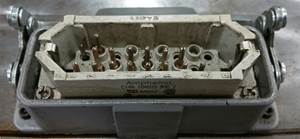PVDF Latex Foam CompositesProvide High Flame Resistance
A new patent-pending technology developed by AtoFina Chemicals in Philadelphia creates highly flame-resistant foams of polyvinylidene fluoride (PVDF) fluoropolymer without the use of blowing agents or melt processing.
A new patent-pending technology developed by AtoFina Chemicals in Philadelphia creates highly flame-resistant foams of polyvinylidene fluoride (PVDF) fluoropolymer without the use of blowing agents or melt processing. The new process combines a liquid latex of AtoFina’s Kynar PVDF copolymer with glass mat or other fabric reinforcements to produce open-cell foams that reportedly exhibit extremely low smoke and flame generation in fire tests. AtoFina sources describe the Kynar foams as “essentially non-flammable.”
Kynar PVDF is transparent to uv radiation, weatherable, and chemically resistant at elevated temperatures. Potential applications for the new foam composites include thermoformed sheet for fire-barrier panels in transportation equipment, construction, and petrochemical processing. Others include plenum-cable insulation wrap for high-rise buildings, coatings on flame-protective clothing for rescue teams, protective sheathing for homes and other structures threatened by wild fires, and coatings on gaskets or other applications where a material is already flame resistant but cannot withstand chemical exposure.
No blowing agents
Although fluoropolymers can be extruded into foams using chemical blowing agents or direct gas injection, AtoFina’s latex process has the advantage of allowing use of long-fiber mats or fabrics. The process starts with soaking the reinforcing mat in a water-based PVDF latex. This is followed by a proprietary method of refrigerating the mixture and drying it to a solid in a mold. As the water evaporates from the resin mix, it is replaced by air, leaving a highly uniform, open-cell structure of interconnected voids, explains research scientist Ramin Amin-Sanayei.
The details of the chilling process are secret, but it can take 3 to 12 hr. AtoFina sources say it is possible to shorten the cycle to as little as 20 min by using moderate heating to around 140 F instead of chilling.
The density of the resulting foam depends on the concentration of polymer solids in the latex. The density of unfilled, solid PVDF copolymer is around 1.78 g/cc. AtoFina’s latex process can yield foam densities of 0.25 g/cc or less. The volume fraction of voids in the foam can be up to 85% or even higher. To generate specific densities and foam textures, certain solvents can be added at low levels to enhance the uniformity of cell structure and distribution.
Fire-test results
Initial laboratory tests show these foam composites have excellent fire resistance. “Standard tests are now under way to substantiate fire-resistance performance,” says Amin-Sanayei. The technology allows for incorporation of all kinds of reinforcements, including long-glass fibers, carbon fibers, natural fibers, and even electrically conductive metal fibers.
| BURN-THROUGH TESTS OF PVDF/GLASS-MAT FOAMS (4 x 6 in. Panels) | |||||
| Sample Structure | Thickness No. | Sample in. | Density g/cc | Burn-Thru Time, sec | Heat-Thru Time, sec* |
1 | 3/8 3/8 3/8 3/8 3/8 3/8 5/8 3/4 1/8 | PVDF/1 Ply Glass PVDF/1 Ply Glass PVDF/1 Ply Glass PVDF/1 Ply Glass PVDF/2 Ply Glass PVDF/3 Ply Glass PVDF/2 Ply Glass Glass Mat Aluminum Panel | 0.33 0.26 0.21 0.11 0.27 0.28 0.26 0.0155 2.7 | 80 65 45 40 120 130 >300 4 90 | - |
| *Time that the side opposite flame remained at room temperature. | |||||
AtoFina conducted flame tests on a Kynar foam encapsulating one or more plies of random chopped-glass mat. A propane torch was placed 2 in. from the 4 x 6 in. flat sample. Several formulations of different densities were exposed to the same flame conditions. Controls of plain glass fiber and 1/8-in.-thick aluminum sheet were also tested. The test measured the time it took for the flame to burn through the flat panel.
As shown in the accompanying table, all the reinforced foam samples compared favorably with the controls. Burn-through time increased with foam density and with the number of plies of glass fiber. Also, a slight change in panel thickness led to a large difference in the time it took for complete burn- through. Most notably, the 5/8-in.-thick glass-fiber/foam system took more than 2.5 times longer to burn through than a comparable 3/8-in. sample.
A thermocouple showed that surface temperature of the foam/glass samples reached more than 1740 F before burn-through occurred. It is notable that the back surface of the samples remained at room temperature for an appreciable time, as shown in the table.
Related Content
A Systematic Approach to Process Development
The path to a no-baby-sitting injection molding process is paved with data and can be found by following certain steps.
Read MoreHot Runners: How to Maintain Heaters, Thermocouples, and Controls
I conclude this three-part examination of real-world problems and solutions involving hot runners by focusing on heaters, thermocouples, and controls. Part 3 of 3.
Read MoreUsing Data to Pinpoint Cosmetic Defect Causes in Injection Molded Parts
Taking a step back and identifying the root cause of a cosmetic flaw can help molders focus on what corrective actions need to be taken.
Read MoreInjection Molding: Focus on these Seven Areas to Set a Preventive Maintenance Schedule
Performing fundamental maintenance inspections frequently assures press longevity and process stability. Here’s a checklist to help you stay on top of seven key systems.
Read MoreRead Next
People 4.0 – How to Get Buy-In from Your Staff for Industry 4.0 Systems
Implementing a production monitoring system as the foundation of a ‘smart factory’ is about integrating people with new technology as much as it is about integrating machines and computers. Here are tips from a company that has gone through the process.
Read MoreMaking the Circular Economy a Reality
Driven by brand owner demands and new worldwide legislation, the entire supply chain is working toward the shift to circularity, with some evidence the circular economy has already begun.
Read More










